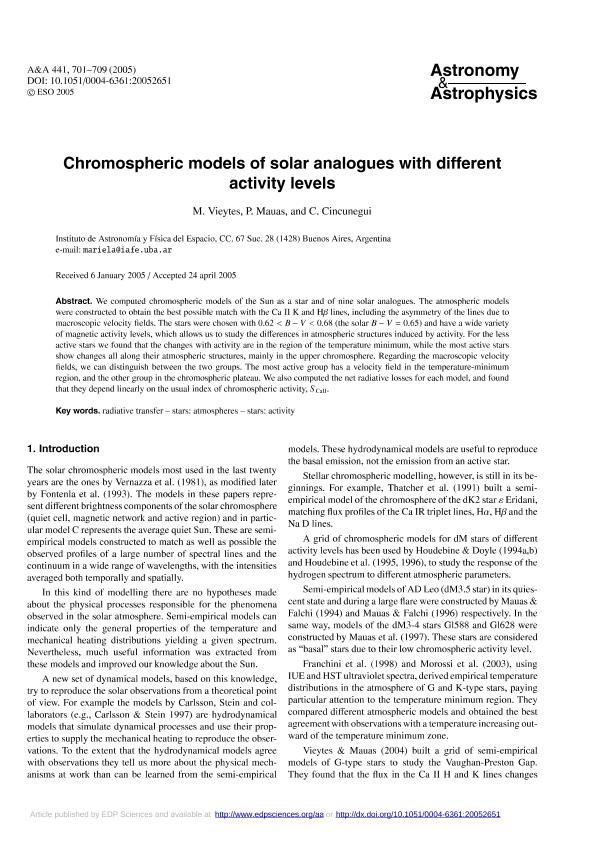Artículo
Chromospheric models of solar analogues with different activity levels
Fecha de publicación:
12/2005
Editorial:
EDP Sciences
Revista:
Astronomy and Astrophysics
ISSN:
0004-6361
Idioma:
Inglés
Tipo de recurso:
Artículo publicado
Clasificación temática:
Resumen
We computed chromospheric models of the Sun as a star and of nine solar analogues. The atmospheric models were constructed to obtain the best possible match with the Ca II K and Hβ lines, including the asymmetry of the lines due to
macroscopic velocity fields. The stars were chosen with 0.62 < B − V < 0.68 (the solar B − V = 0.65) and have a wide variety of magnetic activity levels, which allows us to study the differences in atmospheric structures induced by activity. For the less active stars we found that the changes with activity are in the region of the temperature minimum, while the most active stars show changes all along their atmospheric structures, mainly in the upper chromosphere. Regarding the macroscopic velocity fields, we can distinguish between the two groups. The most active group has a velocity field in the temperature-minimum region, and the other group in the chromospheric plateau. We also computed the net radiative losses for each model, and found that they depend linearly on the usual index of chromospheric activity, S CaII.
Palabras clave:
Chromospheric Models
Archivos asociados
Licencia
Identificadores
Colecciones
Articulos(IAFE)
Articulos de INST.DE ASTRONOMIA Y FISICA DEL ESPACIO(I)
Articulos de INST.DE ASTRONOMIA Y FISICA DEL ESPACIO(I)
Citación
Vieytes, Mariela Cristina; Mauas, Pablo Jacobo David; Cincunegui, Carolina Cecilia; Chromospheric models of solar analogues with different activity levels; EDP Sciences; Astronomy and Astrophysics; 441; 2; 12-2005; 701-709
Compartir
Altmétricas




